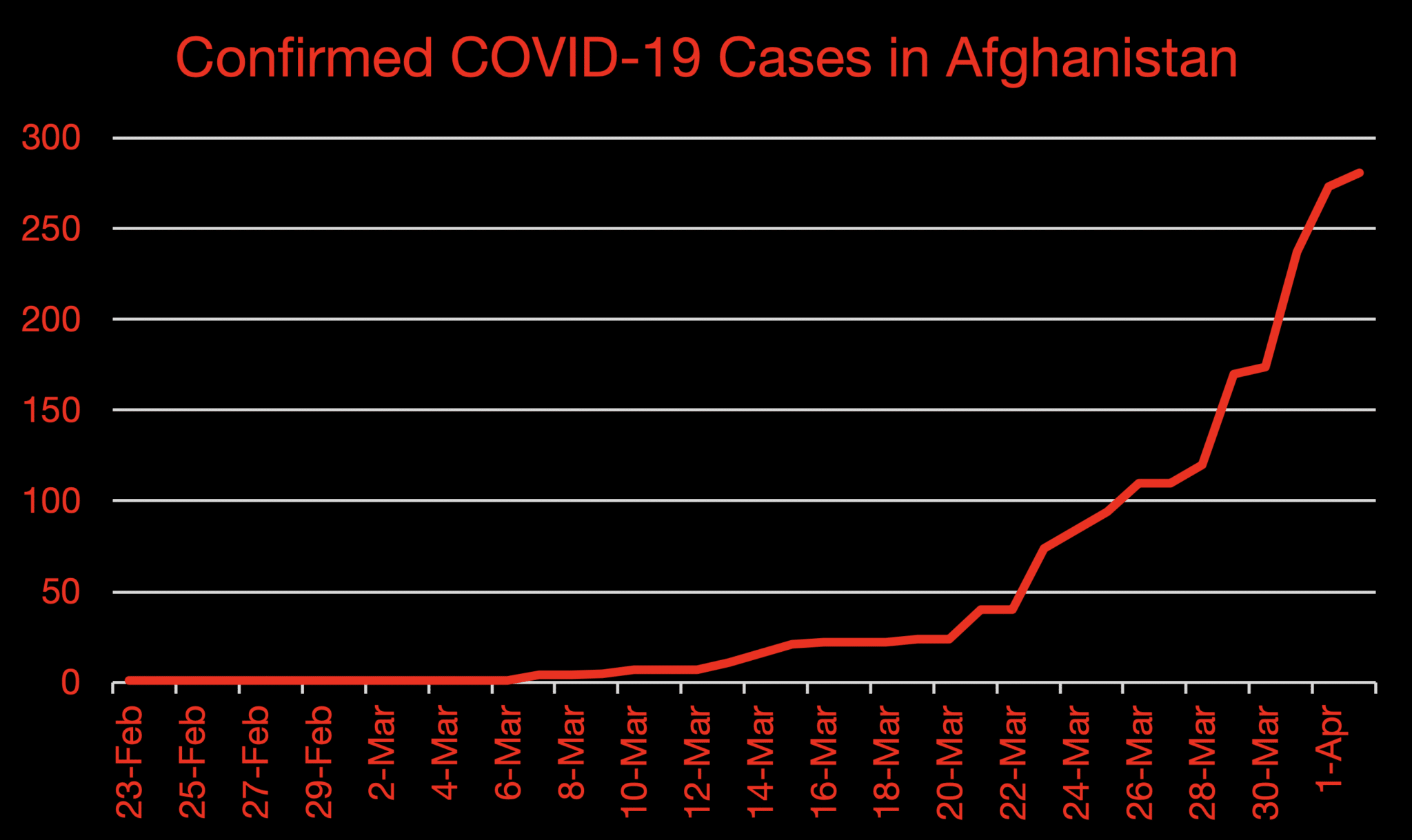April 3, 2020 | Policy Brief
COVID-19 in Afghanistan
April 3, 2020 | Policy Brief
COVID-19 in Afghanistan
As U.S. forces prepare to depart Afghanistan next year, the Taliban has seized on the COVID-19 crisis to present itself as an entity capable of governing more effectively than the elected and internationally recognized government in Kabul. This effort is part of the Taliban’s strategy to present its “Islamic Emirate of Afghanistan” as the country’s legitimate government and the sole representative of the Afghan people.
Situation Overview
Afghanistan has reported 281 confirmed cases and six deaths from COVID-19. The vast majority of the cases (199) have been reported in the province of Herat, which borders Iran, the regional epicenter of the pandemic. Given Afghanistan’s rudimentary healthcare system and largely rural society, it is likely that the number of cases is seriously underreported.
To improve its ability to track the pandemic, the Afghan government is seeking to increase its testing capacity to 1,000 tests per day. Currently, the government can conduct 600 tests daily in three centers in Kabul (400 tests), Herat (100), and Nangarhar (100). The government has instituted a 21-day lockdown in Kabul to prevent additional infections, but many residents in the capital are ignoring it.
COVID-19 in the Greater Middle East
| Country | Cases | Deaths |
| Iran | 53,183 | 3,294 |
| Turkey | 20,921 | 425 |
| Israel | 7,428 | 40 |
| Pakistan | 2,637 | 40 |
| Saudi Arabia | 2,039 | 25 |
| UAE | 1,264 | 9 |
| Qatar | 1,075 | 3 |
| Algeria | 986 | 86 |
| Egypt | 985 | 66 |
| Iraq | 820 | 54 |
| Morocco | 761 | 47 |
| Bahrain | 672 | 4 |
| Lebanon | 508 | 17 |
| Tunisia | 495 | 18 |
| Kuwait | 417 | 0 |
| Jordan | 310 | 5 |
| Afghanistan | 281 | 6 |
| Oman | 252 | 1 |
| W. Bank & Gaza | 193 | 1 |
| Syria | 16 | 2 |
| Libya | 11 | 1 |
| Sudan | 10 | 2 |
| Somalia | 7 | 0 |
| Yemen | 0 | 0 |
Source: JHU Coronavirus Resource Center.
Data current as of 4:15 PM, April 3, 2020.
Implications
A weak Afghan government with a substandard – and in some areas, nonexistent – healthcare system provides the Taliban an opening to present itself as the responsible party in the fight against COVID-19. Currently, the Afghan government controls only 133 of Afghanistan’s 407 districts, according to an ongoing security assessment by FDD’s Long War Journal. The Taliban controls 75 districts, while 189 remain contested. It is unclear whether the government can access those 189 districts, and it clearly cannot operate in those under Taliban control, which amount to nearly a fifth of all districts.
The Taliban is employing its propaganda outlets to demonstrate that it is caring for Afghans in areas it controls. Between March 29 and 30, the Taliban issued four statements accompanied by photographs on its official website, Voice of Jihad. The images show its healthcare workers addressing the public in the provinces of Badghis, Logar, Paktika, and Sar-i-Pul. Taliban health officials are shown donning masks as well as lab coats or armbands with the Taliban’s flag emblazoned. They are passing out supplies and lecturing Afghans on the dangers of the virus.
The Taliban’s message is clear: It is capable of distributing aid and caring for the people under its control, while the Afghan government remains weak.
What to Watch for
It is difficult to predict how COVID-19 will spread in Afghanistan. Larger cities are more likely to be affected, while the rural areas (where the Taliban largely hold sway) will likely have far fewer cases due to the isolated nature of the Afghan countryside. If the cities are hit hard by the virus, Afghanistan’s healthcare system is not prepared to deal with large numbers of patients. The Taliban can and will use COVID-19 as a wedge issue to delegitimize the Afghan government and further promote its Islamic Emirate of Afghanistan.
